After pandemic high, WA weed industry finds itself in a funk
Published in Business News
“Munchie Monday.”
“Wax Wednesday.”
“Flower Friday.”
These are just a few of the weekly pitches offered by Shawn Kemp’s Cannabis, one of the largest dispensaries in Seattle. The deals, which range from 55% to 65% off, reflect a larger trend in Washington’s matured marijuana market: You can now buy more weed for less.
The total value of cannabis sales, which bring in hundreds of millions of dollars in tax revenue to the state each year, has declined in 2025, continuing a slump now in its fourth year. Local pot shops and the state’s cannabis board point to a flooded market without a growing consumer base as a reason for the decreasing revenue, even as the volume of marijuana products sold holds steady.
With a 47% tax rate on cannabis products, some shops are barely breaking even. And in Seattle, a city with more than 50 licensed dispensaries, business owners are searching for creative ways to make their products stand out.
“You can buy twice as much (cannabis) for the same amount of money as a couple years ago,” said Tran Du, manager and co-owner of Kemp’s Cannabis.
'People that want to smoke are already smoking'
Cannabis sales for the first quarter of 2025 totaled nearly $280 million, a 25% decrease from the $370 million sold in the first quarter of 2021, the industry’s highest revenue year.
Back then, the state had closer to 400 licensed retail cannabis stores. Today, that number is over 600, with about 210 in the Seattle-Tacoma area alone.
But while the number of retailers has continued to grow, the customer base has not.
During the COVID-19 pandemic, Du said, people rushed to buy marijuana. Stimulus checks provided some extra income to spend on the drug and, with nothing to do but stay at home, people had plenty of time to get high.
But as the economy pulled back, so did spending on marijuana, Du said. In 2020 and 2021, Du saw about $700,000 in monthly sales, after taxes. Now, he brings in $500,000.
“It’s been steady for a year but people are squeezed right now and cannabis is the last option for people to spend their money on,” Du said.
Still, Du’s customer base remains consistent. He sees everyone from “soccer moms to construction workers to grandmothers.” Most of his buyers come in once or twice a week, spending about $35 a transaction.
So what explains the larger change in the market? Du, and the state’s cannabis board, say there are many factors, including a surplus of product, changing consumer patterns and a general decrease in cannabis prices.
Julie Graham, spokesperson for Washington’s Liquor and Cannabis Board, said some customers are switching away from smokable cannabis and to concentrates used in vape pens. But Du said half of what he sells is flower, the buds that are pulled off the plant and dried for smoking.
Graham said she isn’t sure why prices are decreasing, but a market study from the Washington Joint Legislative Audit and Review Committee points to an oversupply of cannabis.
Because marijuana isn’t federally legal, all growing and selling takes place within the state. Growers have continued producing the plant. Dispensaries have continued to open. And, in one of the oldest marijuana markets in the country, prices are slipping lower and lower.
To remain competitive, Du said his shops, which include locations in Belltown and Sodo, do massive giveaways and offer huge discounts. Four years ago, an eighth of flower marijuana sold at his shops for $40. Today, it is $15.
He’s been doing everything else to drive sales and draw in new customers. Having a celebrity spokesperson, six-time NBA All-Star and former Seattle SuperSonic Shawn Kemp, helps. So does having a massive inventory.
Du said he’s been trying to find other ways to entice new customers and is thinking about ways to make consumption easier, like delivery.
“The people that want to smoke are already smoking,” Du said. “I wish I had a crystal ball to know what would really drive sales because we’re pretty much tapped out.”
Other smaller shops are feeling the decline even more acutely.
Daniel Coleman, manager of Ruckus Recreational Cannabis, said he’s seen a “drastic” decrease in sales. While he thinks that is in part due to a flooded market, he also said it’s because of larger economic changes, as people are becoming less spend-happy on nonessentials such as weed.
Coleman, who worked in the cannabis industries in California and Nevada, said Washington has the cheapest market by far, making profitability difficult.
Ruckus can price-match with some dispensaries, but has a hard time competing with larger shops that buy in bulk. Instead, Coleman said, Ruckus has invested in becoming a community-based shop that prioritizes vendor relationships and customer service to drive sales.
Even so, Coleman said the shop is always working to break even.
“It’s a constant, never really coming up on top and trying to keep a good balance,” Coleman said.
Decreasing revenue isn’t just going to affect cannabis shops and users. Tax revenue brought in from marijuana sales helps fund state services.
'We pay a lot of taxes to run a pot shop'
In 2021, the state brought in $555.4 million in cannabis tax revenue. By 2024, that number dropped to $454.7 million, an 18% decrease.
This revenue goes to various state services, according to state dashboards, including over half to a basic health account which helps fund programs like Medicaid and other low-income health care programs. Another quarter went to a state general fund and 17% went to specific state agencies.
The state’s health account is not solely funded by tax revenue from cannabis. It includes funds from federal grants, other state tax and fee collections, and local governments, among other agencies like school districts.
Marijuana still brings in far more money than other recreational drugs. There were just under 4,000 liquor license applications received by the Washington State Liquor and Cannabis Board in fiscal year 2024, but the state only collected $265.7 million in taxes and fees, including penalties. Tobacco brings in even less, with less than $500,000 coming from sales in 2024.
“Certainly (the tax revenue) goes to support important programs,” Graham said. “But I don’t know the overall impact to the programs.”
While the high tax rate may benefit state services, it has hit cannabis shops hard. There’s a 37% excise tax on marijuana, placed on top of a sales tax. For shops like Kemp’s, this means if they bring in a million dollars in sales a month, it is losing nearly half a million to taxes.
“We pay a lot of taxes to run a pot shop,” Du said. “It’s not cheap.”
Because cannabis is illegal at the federal level, there are also fewer tax breaks, meaning dispensaries can’t write off standard deductions like employee expenses or rent.
Du said lowered taxes on the product would provide much needed relief to the cannabis industry. But a change to the tax rate would require new legislation, Graham said. For dispensaries, finding ways to bring in new customers may be the quickest solution.
“It’s a race to the bottom right now,” Du said, “and I don’t know what is going to stabilize it.”
©2025 The Seattle Times. Visit seattletimes.com. Distributed by Tribune Content Agency, LLC.
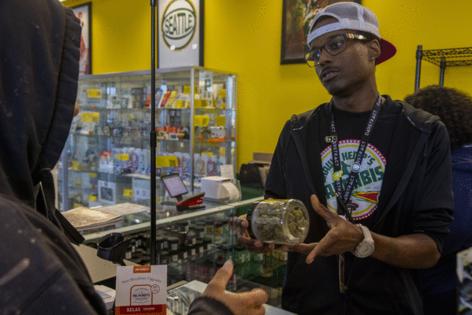
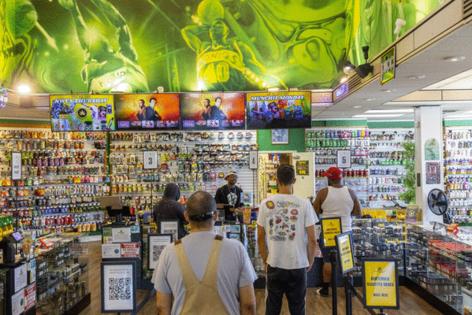
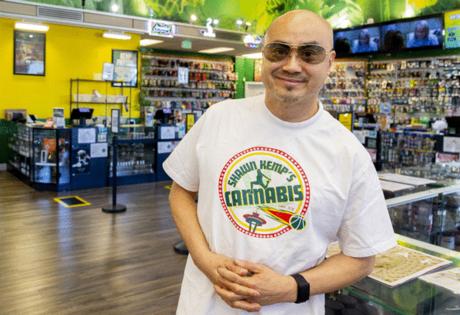







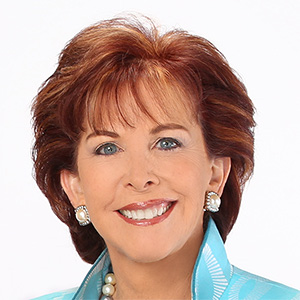
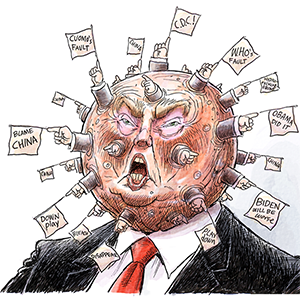
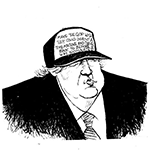


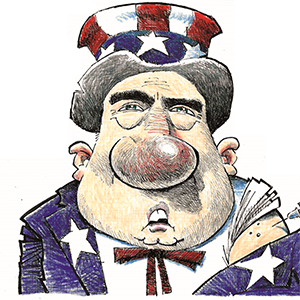

Comments